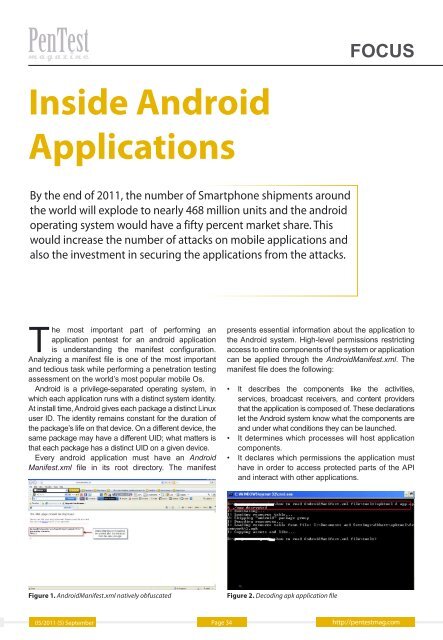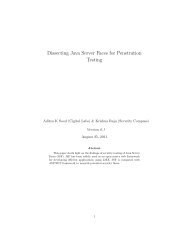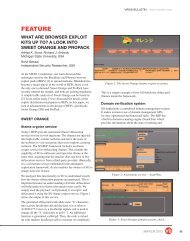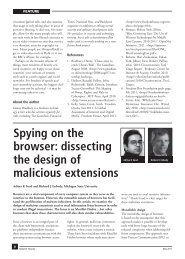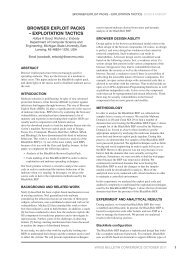Devices - Penetration Testing Like a Hacker. - SecNiche Security Labs
Devices - Penetration Testing Like a Hacker. - SecNiche Security Labs
Devices - Penetration Testing Like a Hacker. - SecNiche Security Labs
Create successful ePaper yourself
Turn your PDF publications into a flip-book with our unique Google optimized e-Paper software.
FOCUSInside AndroidApplicationsBy the end of 2011, the number of Smartphone shipments aroundthe world will explode to nearly 468 million units and the androidoperating system would have a fifty percent market share. Thiswould increase the number of attacks on mobile applications andalso the investment in securing the applications from the attacks.The most important part of performing anapplication pentest for an android applicationis understanding the manifest configuration.Analyzing a manifest file is one of the most importantand tedious task while performing a penetration testingassessment on the world’s most popular mobile Os.Android is a privilege-separated operating system, inwhich each application runs with a distinct system identity.At install time, Android gives each package a distinct Linuxuser ID. The identity remains constant for the duration ofthe package’s life on that device. On a different device, thesame package may have a different UID; what matters isthat each package has a distinct UID on a given device.Every android application must have an AndroidManifest.xml file in its root directory. The manifestpresents essential information about the application tothe Android system. High-level permissions restrictingaccess to entire components of the system or applicationcan be applied through the AndroidManifest.xml. Themanifest file does the following:• It describes the components like the activities,services, broadcast receivers, and content providersthat the application is composed of. These declarationslet the Android system know what the components areand under what conditions they can be launched.• It determines which processes will host applicationcomponents.• It declares which permissions the application musthave in order to access protected parts of the APIand interact with other applications.Figure 1. AndroidManifest.xml natively obfuscatedFigure 2. Decoding apk application le05/2011 (5) SeptemberPage 34http://pentestmag.com


